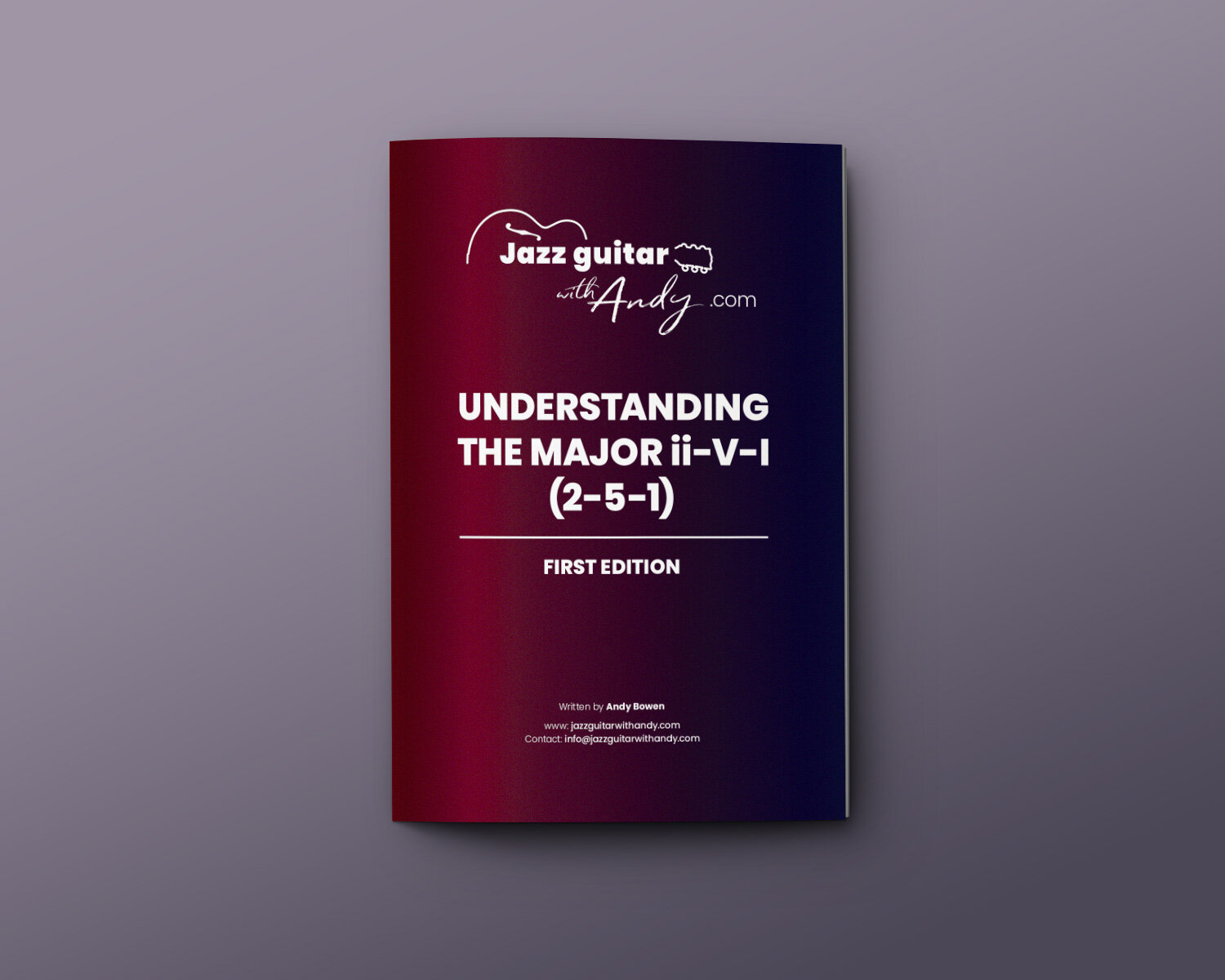 Image 1 of 2
Image 1 of 2

 Image 2 of 2
Image 2 of 2



Understanding the Major ii-V-I
Having a good understanding of the major ii-V-I is essential if you really want to get to grips with playing jazz. It is so commonly used and with a good knowledge of it you can more easily understand jazz standards and chord function.
This eBook will ensure you not only understand the progression, but can play it in a number of ways too. The balance of theory and practice should give you a strong foundation from which you can really start to move forward with your jazz guitar playing.
See below for a list of what topics are covered:
Having a good understanding of the major ii-V-I is essential if you really want to get to grips with playing jazz. It is so commonly used and with a good knowledge of it you can more easily understand jazz standards and chord function.
This eBook will ensure you not only understand the progression, but can play it in a number of ways too. The balance of theory and practice should give you a strong foundation from which you can really start to move forward with your jazz guitar playing.
See below for a list of what topics are covered:
Having a good understanding of the major ii-V-I is essential if you really want to get to grips with playing jazz. It is so commonly used and with a good knowledge of it you can more easily understand jazz standards and chord function.
This eBook will ensure you not only understand the progression, but can play it in a number of ways too. The balance of theory and practice should give you a strong foundation from which you can really start to move forward with your jazz guitar playing.
See below for a list of what topics are covered:
Over 54 pages the eBook covers:
The theory behind the 251
Why it works and how it functions
How to find it efficiently
Playing the progression in drop 2, drop 3, drop 2 and 4 and 1-3-7 voicings.
Playing the progression in all keys
Typical ways in which the 251 is used ( semitone, tone and movements in 3rds)
Examples from standards
This eBook would suit both beginner and intermediate jazz players. Examples include notation, tab and chord diagrams where appropriate.
